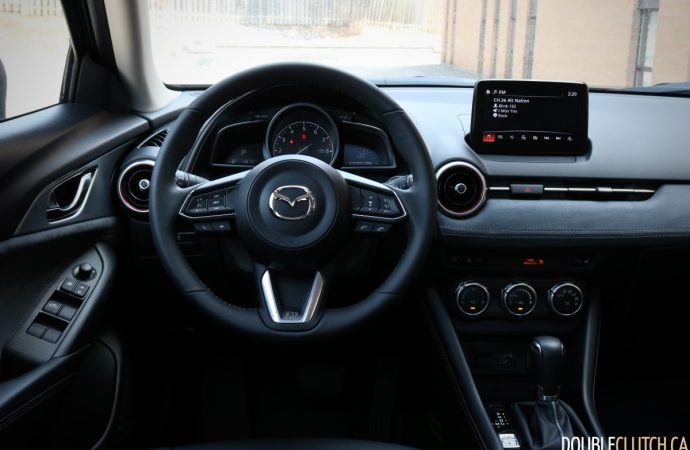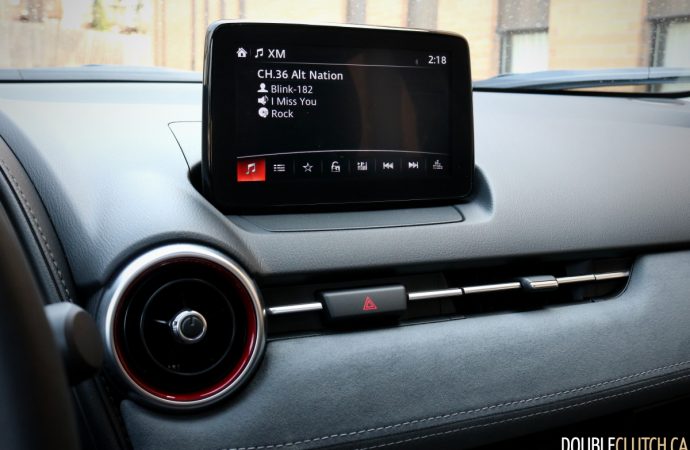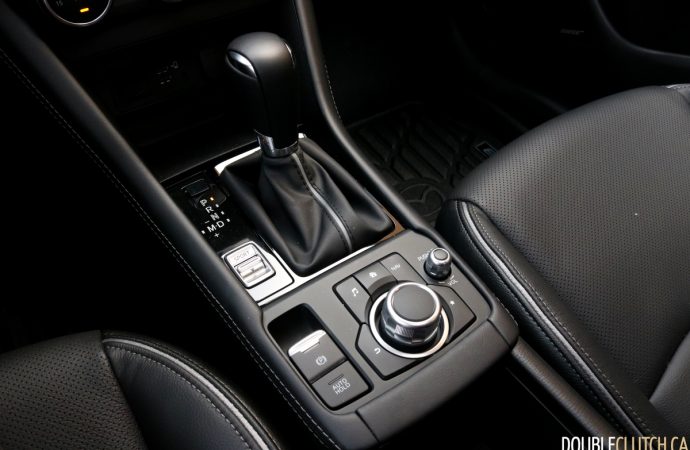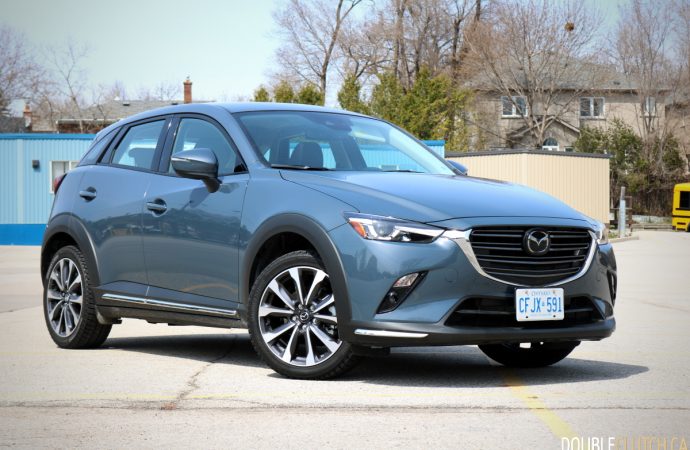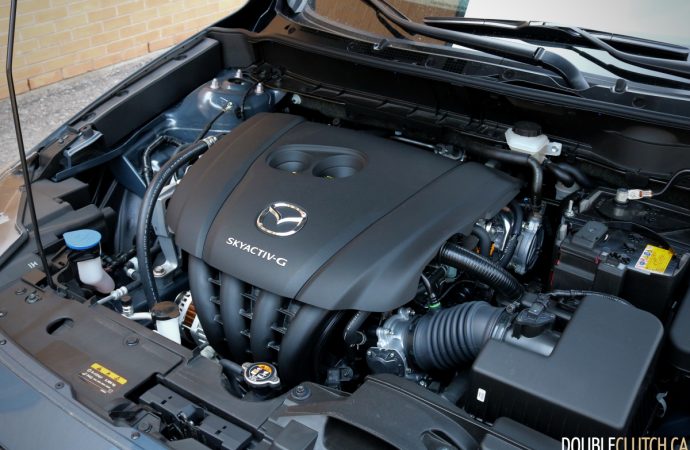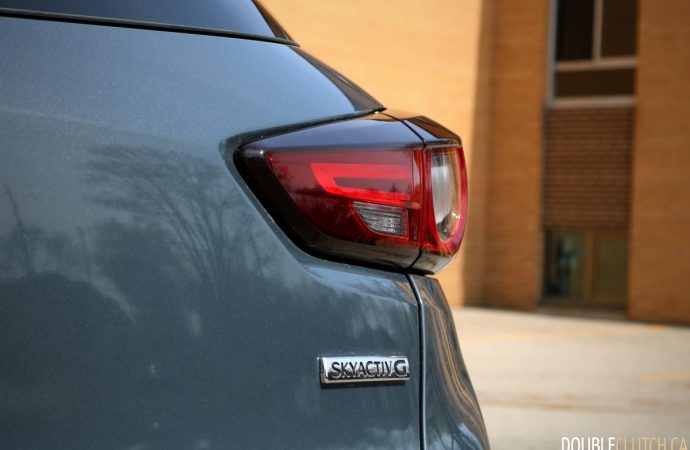Mazda was one of the first manufacturers to throw their hat into the ring for the subcompact crossover resurgence with the CX-3, a truly small crossover that paired a city-sized footprint with a taller seating position. Since then, the segment has exploded with Chevrolet and Hyundai each offering two distinct subcompact crossovers and Mazda offering the CX-30 to split the difference between the CX-3 and CX-5. So, after six years on the market, how does the 2021 Mazda CX-3 GT AWD measure up?
The designers at Mazda really know how to do style and the CX-3 is no exception. From early adoption of the floating rear pillar treatment so de rigueur of current car design to crisp, minimalist lines, the CX-3 still cuts a sharp look. Worth particular note are the large character lines that swoop back over the front arches, turn downward and terminate on the rear doors to visually enhance the CX-3’s dash-to-axle ratio. It’s a handsome look, playing with light and shadow in a way that’s interesting without being fussy. Our GT-trim test car rolls on 18-inch alloy wheels, while mid-trim GS models get 16-inch alloys and entry-level GX models get 16-inch steel wheels with hubcaps.
On the inside of the CX-3, Mazda have really focused on design and materials. The air vents are these big, round space-age afterburners, the infotainment screen sits uncrowded atop the dashboard and the whole aesthetic is very sleek and minimalist. While many plastics are typical of the segment, there are still enough soft-touch surfaces to spice things up, especially the great swaths of suede across the dashboard and door cards of our GT test car. The leather on the seats and steering wheel is of great quality too, a noticeable step up from most competitors.
In terms of tech, our GT-trim car came equipped with plenty of toys. While there’s no colour screen in the gauge cluster, there is a fighter jet-style heads-up display that beams everything from vehicle speed to blind-spot monitoring up onto a plastic screen atop the gauge cluster. The infotainment is Mazda’s first-generation Mazda Connect system with a rotary controller, a seven-inch screen and touchscreen functionality limited to when the CX-3 is at a standstill. It’s an easy-to-navigate system and the rotary controller is a huge boon for drivers who want to keep their eyes on the road.
Apple CarPlay and Android Auto are standard across all trim levels, while our loaded example gained a seven-speaker Bose premium audio system. While it doesn’t offer a centre channel speaker, it’s still a reasonably nice upgrade and on-par with premium stereos in most subcompact crossovers. Distortion is relatively low and the sound signature is fairly balanced, if a bit lacking in low-end punch.
Where the CX-3 is outclassed by its competitors is in the department of space. The CX-3 is absolutely tiny, almost ten centimetres shorter than a Toyota Corolla hatchback, and that small footprint is really noticed on the inside. While the front seat offers up a good amount of room, the rear seat is extremely tight and the cargo space is positively diminutive.
In fact, a cursory glance at the spec sheet reveals that the Mazda CX-3 has significantly less cargo space behind the rear seats than a Mazda 3 Sport. Those looking to haul more than a standard-size carry-on bag or put humans in the rear seat for more than ten minutes at a time will want to step up to a larger car.
Powering the CX-3 is Mazda’s familiar two-litre Skyactiv four-cylinder engine making 148 horsepower and 146 lb.-ft. of torque. Keen readers will know that’s seven fewer horsepower and two fewer lb-ft of torque than a two-litre Mazda 3, and that’s because the CX-3’s small size can’t accommodate the same bundle-of-snakes exhaust manifold that the Mazda 3 has. In the real world, the difference isn’t huge.
The CX-3 is still very slow, but no slower than most other subcompact crossovers. What’s more, the six-speed automatic gearbox is a welcome change from the CVT drone-fest typical of the subcompact crossover segment. As for fuel economy, we averaged 8.4 L/100km over a week of mixed driving, a hair worse than the government’s combined rating of 8.1 L/100km but still not bad. Likely more annoying is the CX-3’s small fuel tank. Front-wheel-drive models can hold 48 litres of fuel but all-wheel-drive versions can only carry 45 litres of fuel, resulting in a rather short real-world driving range.
The first impression of driving the CX-3 is one of noise. See, it was developed before Mazda really began their intense NVH-reduction program so there’s plenty of wind and road noise, something exacerbated by the winter tires on our test car. However, with noise and vibration comes a joyous sense of connectedness. The CX-3 doesn’t shy the driver to the fact that it’s a car, with an engine in front of it and the road beneath it.
The suspension tuning is taut, the steering offers up a surprisingly good feel of what the front tires are doing and the whole thing feels refreshingly analogue. Feel the rush of bumpy tarmac, the slight squirm from the front tires while carving up an on-ramp, the slow but determined pull towards redline, all unmistakable tactile sensations of driving.
As expected for a new car, the Mazda CX-3 comes with a whole range of active driver assists. Even the base GX model gets low-speed automatic emergency braking, blind-spot monitoring and rear cross-traffic alert. Stepping all the way up to the GT trim adds full-speed automatic emergency braking, adaptive cruise control, lane-departure warning, traffic-sign recognition and following distance monitoring. We found most of these systems to work reasonably well, although the blind-spot monitoring system seemed to be calibrated for a much larger vehicle. As ever, good driver assist systems are no substitute for properly attentive driving.
So then, the 2021 Mazda CX-3 is a bit old and rather cramped, but nice to look at and enjoyable to drive. That’s all well and good, but is it priced aggressively enough to make up for its shortcomings? The honest answer is no. While a starting price of $22,600 for the base GX front-wheel-drive model is alright, a Nissan Kicks S costs $2,702 less, offers the same amount of kit, significantly more interior space and even better fuel economy.
Our range-topping GT-trim test car stickered for $31,300, a price at which a Mazda CX-30 GS AWD with the Luxury Package is a more modern, more stylish, more refined, more practical vehicle that still retains all of the positive aspects of the CX-3. And that’s before even looking at standard hatchbacks. A Mazda 3 Sport or Toyota Corolla Hatchback offers more practicality and more refinement than this 2021 Mazda CX-3 GT AWD while sacrificing very little in terms of ruggedness or seat height.
See Also:
2020 Toyota Corolla Hatchback XSE


